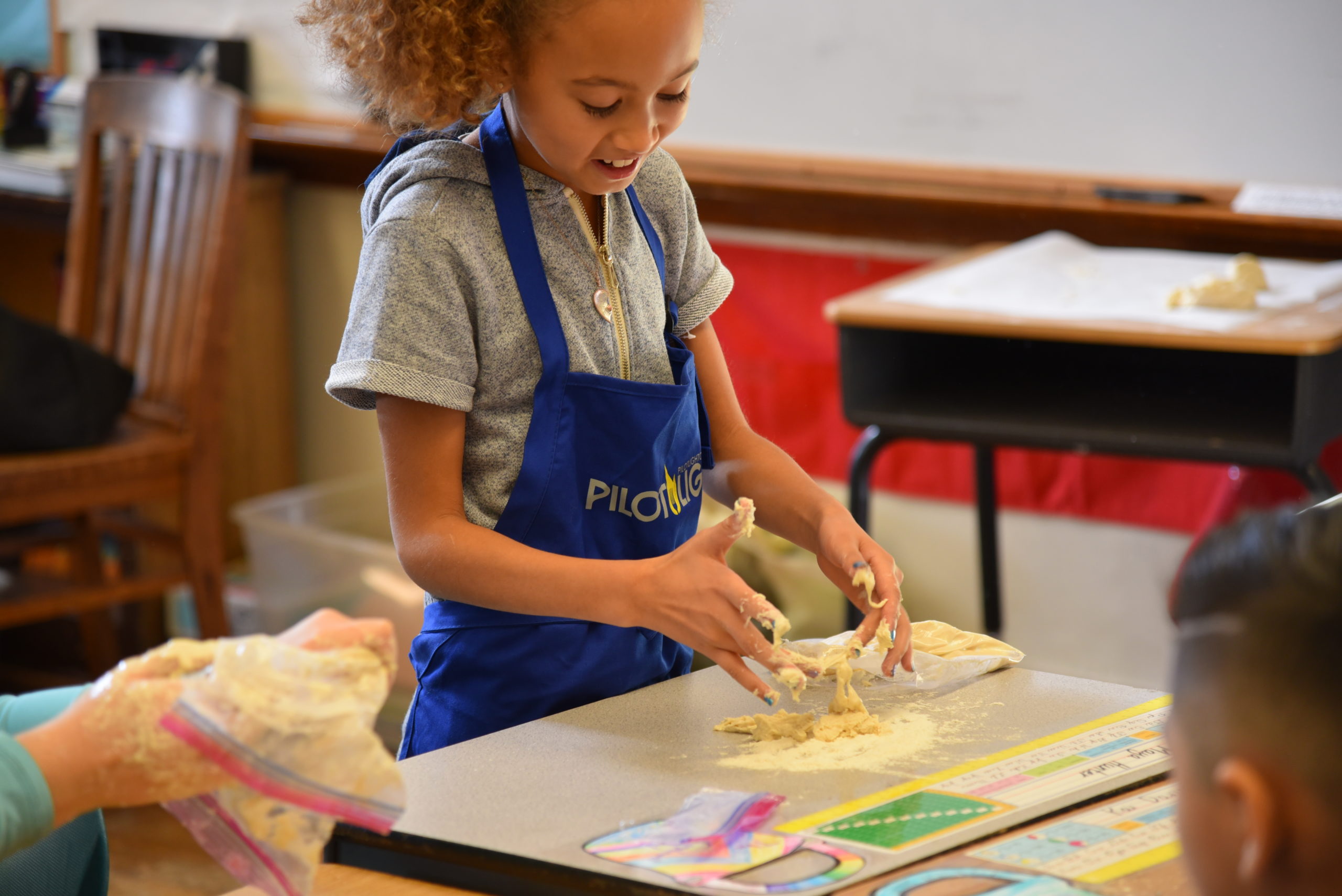Food choices are influenced by a variety of factors. FES 6 is about understanding the agency and ability each individual has to make informed food decisions within the context of their own lives.
This Standard Means
- Food choices can involve many aspects, including financial (in)security, physical health, emotions/mental health, seasonal/regional availability, food access, who made it, and more.
- We can incorporate our knowledge about social, emotional, nutritional, and environmental impact from previous standards to make informed food choices.
- Processed and unprocessed foods affect the body in different ways. We can make thoughtful decisions about when and how often to eat types of food.
- We can feel empowered to have autonomy over our bodies through our choices around food.
- When we understand the factors involved in food choices, we have the opportunity to practice food behaviors that invest in lifelong health.
- Students who demonstrate understanding can find, prepare, and/or plan a nutrient-dense meal or recipe and explain their choices for each ingredient.
FES 6 In Action
“They were more open [to trying something new] after I gave them more background about the food they would be tasting.”
–SnackTime Explorers Educator in Hammond, IN, 2024
How to bring FES 6 to Your Students
Try these examples of real-world community experiences with your students aged K-12 to help them understand the importance of food in their daily lives!
- Arrange a trip to a farmer’s market to observe foods from different groups/colors/categories.
- Invite a local chef or connect with food service professionals to demonstrate cooking that helps show ‘eating the rainbow’ in action.
- Engage in a food science experiment or demonstration on sugar intake, food dyes, sodium content, or other food additives.
- Arrange a field trip to a market to analyze food labels and make a list of kid-approved nutrient-dense swaps for common snacks.
- Create advertisements for nutrient-dense foods to share with others.
- Using a pre-packaged meal, analyze the nutritional and economic impact of the meal when compared to the same meal being made from fresh ingredients at home.
- Analyze a restaurant menu in order to identify nutrient-dense swaps.
- Tour a local grocery store, bodega or farmers market and develop materials to help highlight nutrient-dense foods.
- Tour a local food bank and interview the registered dietitian staff on ways they work to consider health in food distributions.
- Put together a cookbook or nutritious recipes and taste test recipes that align with SNAP-Ed, EFNEP, and/or 4-H requirements.
Grade Specific Competencies
- I can talk about a food that makes me feel good.
- I know that people eat many kinds of food.
- I can name different kinds of food.
Play-Based Activities:
- Dramatic play: incorporate items to allow store/market play; add seasonal play food to dramatic play area
- Pretend to prepare a meal for the stuffies in your classroom
- Sort and compare foods
- Visit the school cafeteria and look at different types of food served
- Create a scavenger hunt for pictures of food around the room (or in picture books!)
- Collect menus from local food establishments and encourage kids to pretend play making and taking orders
- Explore photos of different foods eaten all around the world
- Encourage each child to make a “favorite foods” poster with drawn or cut/collage photos from magazines
- Create an ABC of Foods class book
- Sort fruits and vegetables by color
- Reading area: Add cookbooks/food magazines with pictures and supermarket circulars
Grade-Specific Competencies
- I can identify trends and patterns within my own daily eating habits (i.e fast food breakfast on Mondays, vegetable vs. fruit consumption).
- I can talk about how different foods make me feel.
- I can describe what a balanced plate of food could include.
Grade-Specific Competencies
- I want to know about the components of balanced meals.
- I can talk about the differences between whole and processed foods.
- I can analyze ingredients and recipes, using the information to create or identify alternatives that my body might need.
Grade-Specific Competencies
- I can reflect upon my daily food choices and take actions that promote my overall health, growth, and development.
- I can compare and contrast the nutritional and economic values of prepared, packaged, and homemade meals of the same content.
Grade-Specific Competencies
- I can explain the long-term benefits of nutritious foods.
- I want to know more about making food choices based on various health determinants (i.e people with diabetes, food allergies, high blood pressure, or heart disease).
- I can talk about resource management (e.g. meal planning, creating a shopping list, checking fridge/cabinets in advance, minimizing food waste, creating a budget, gathering coupons or EBT/WIC vouchers).

